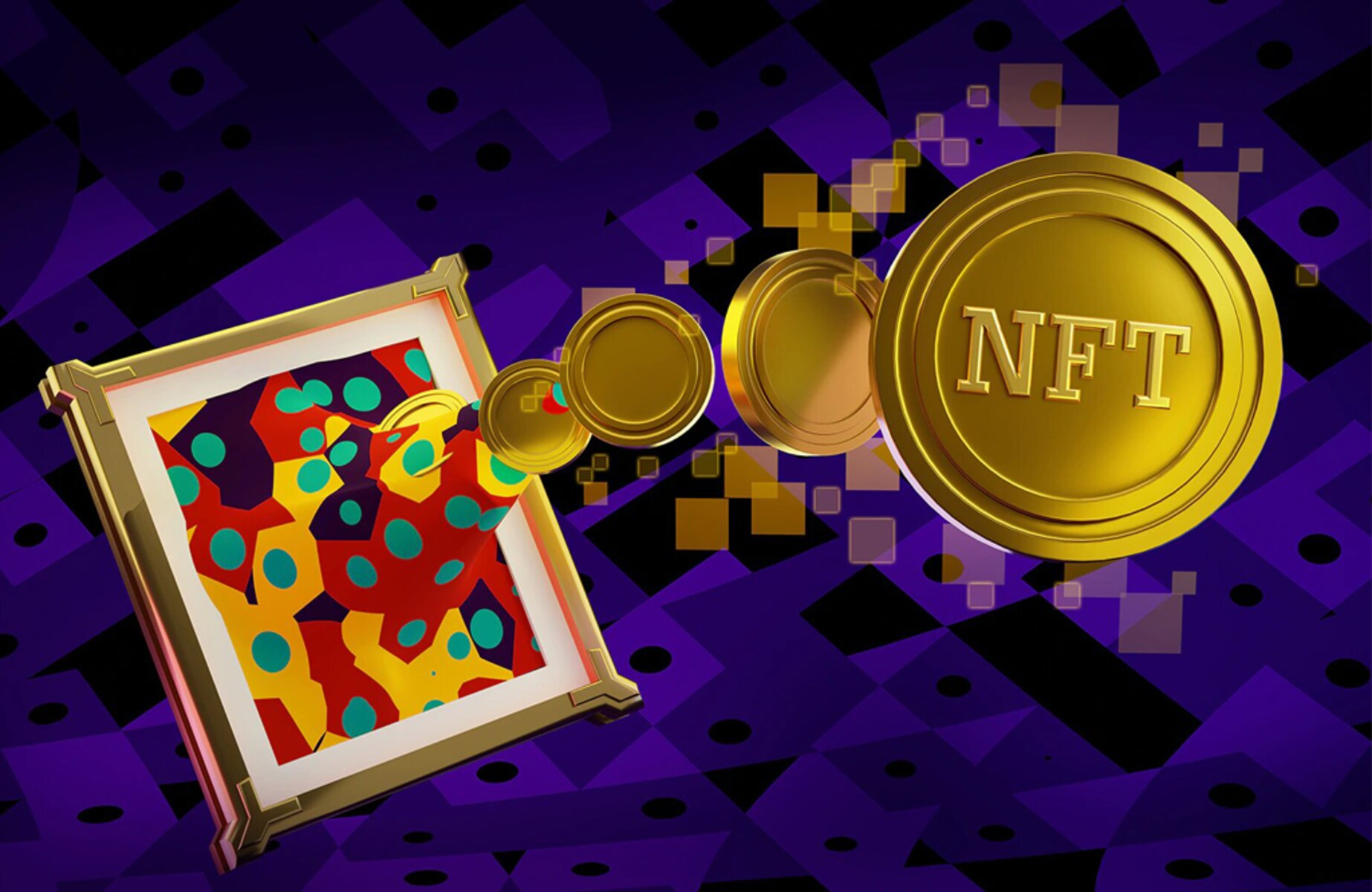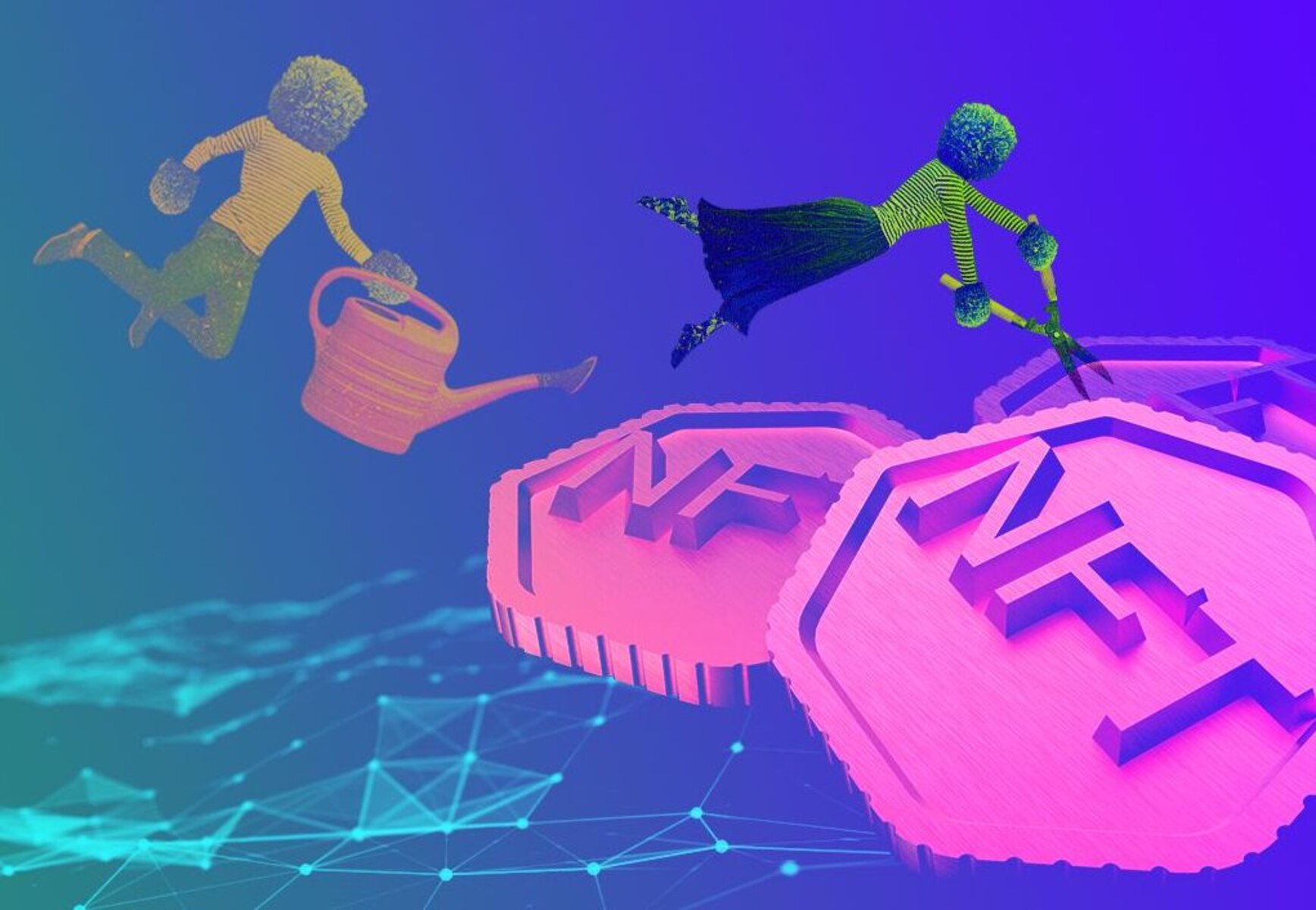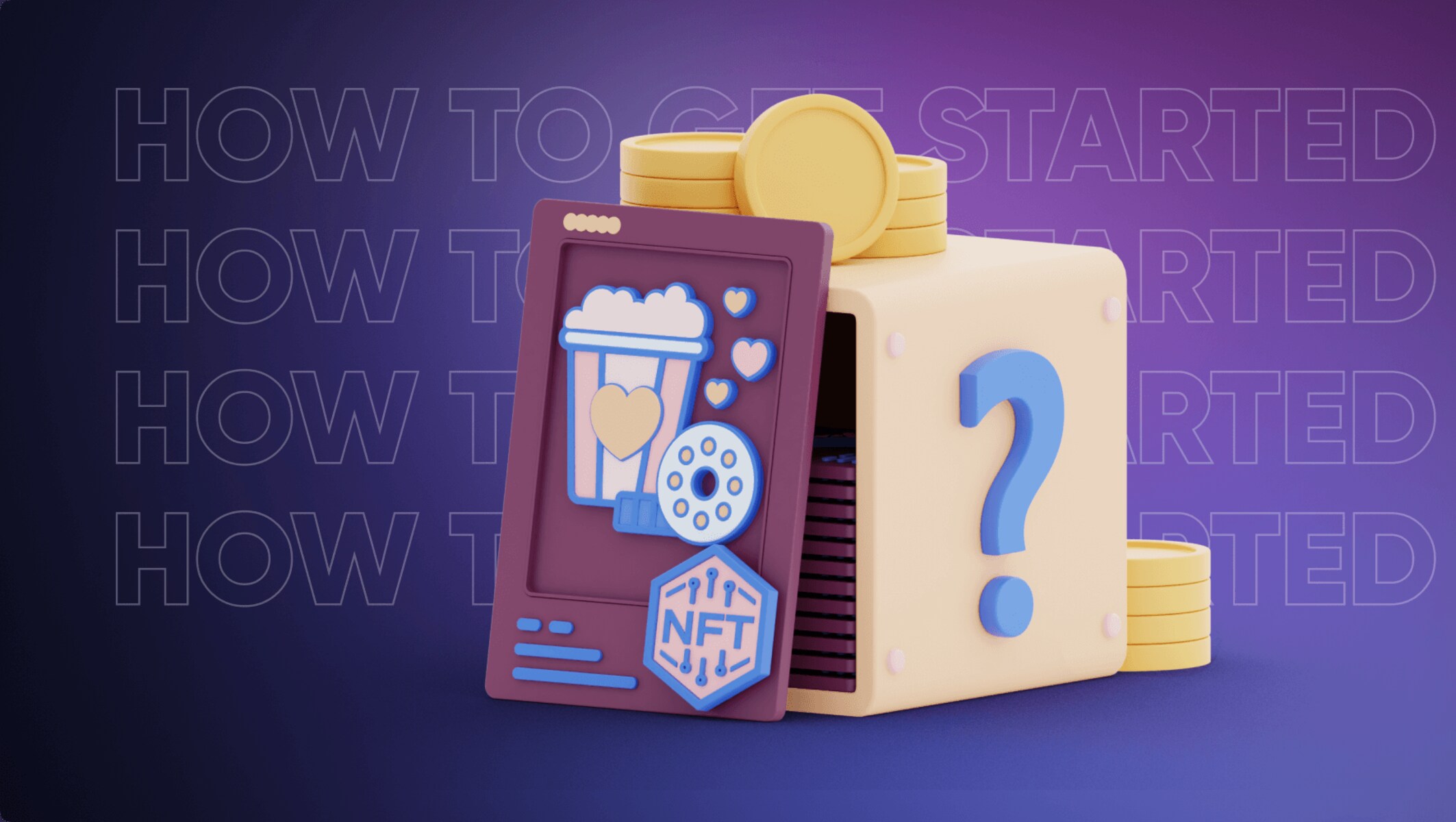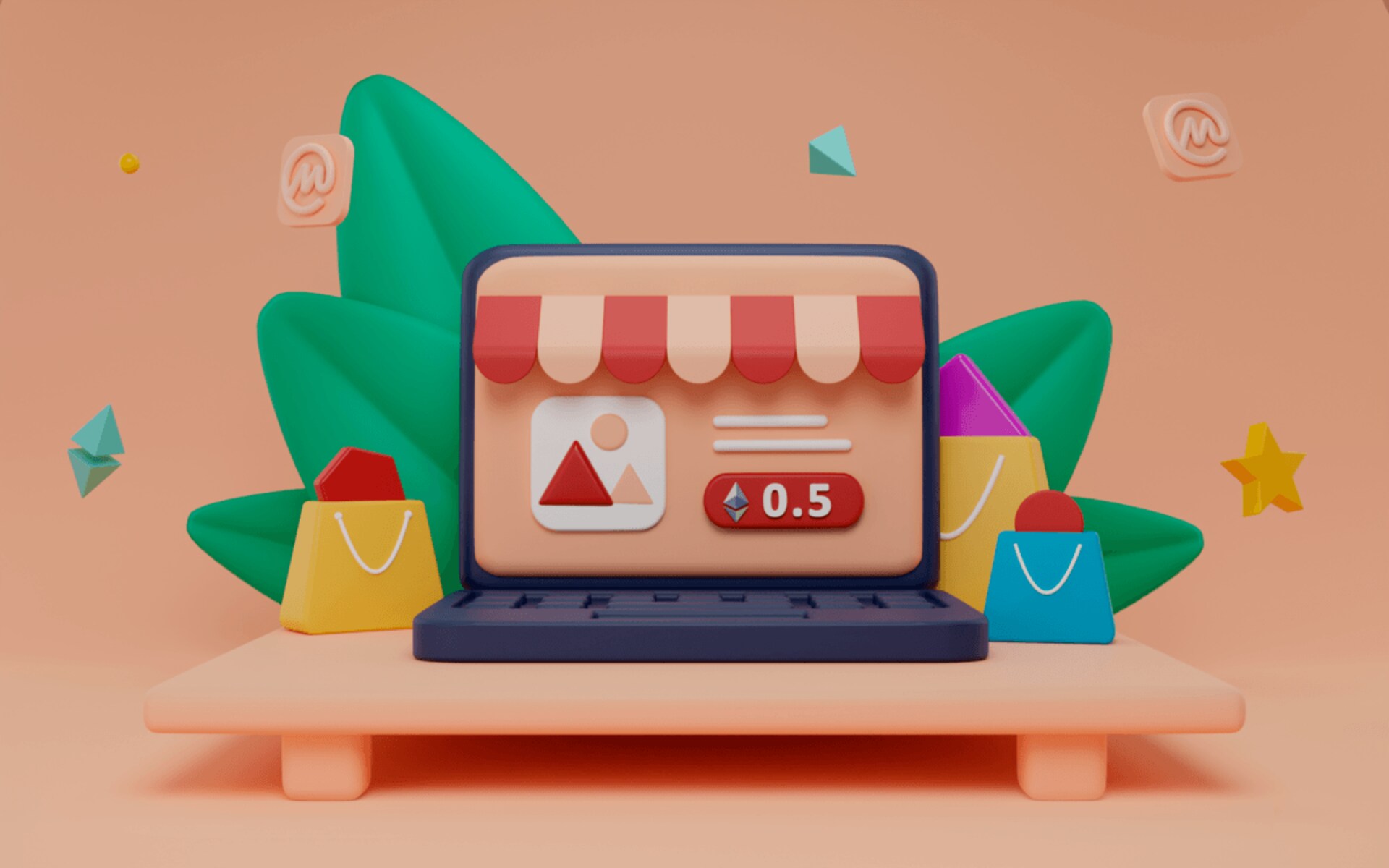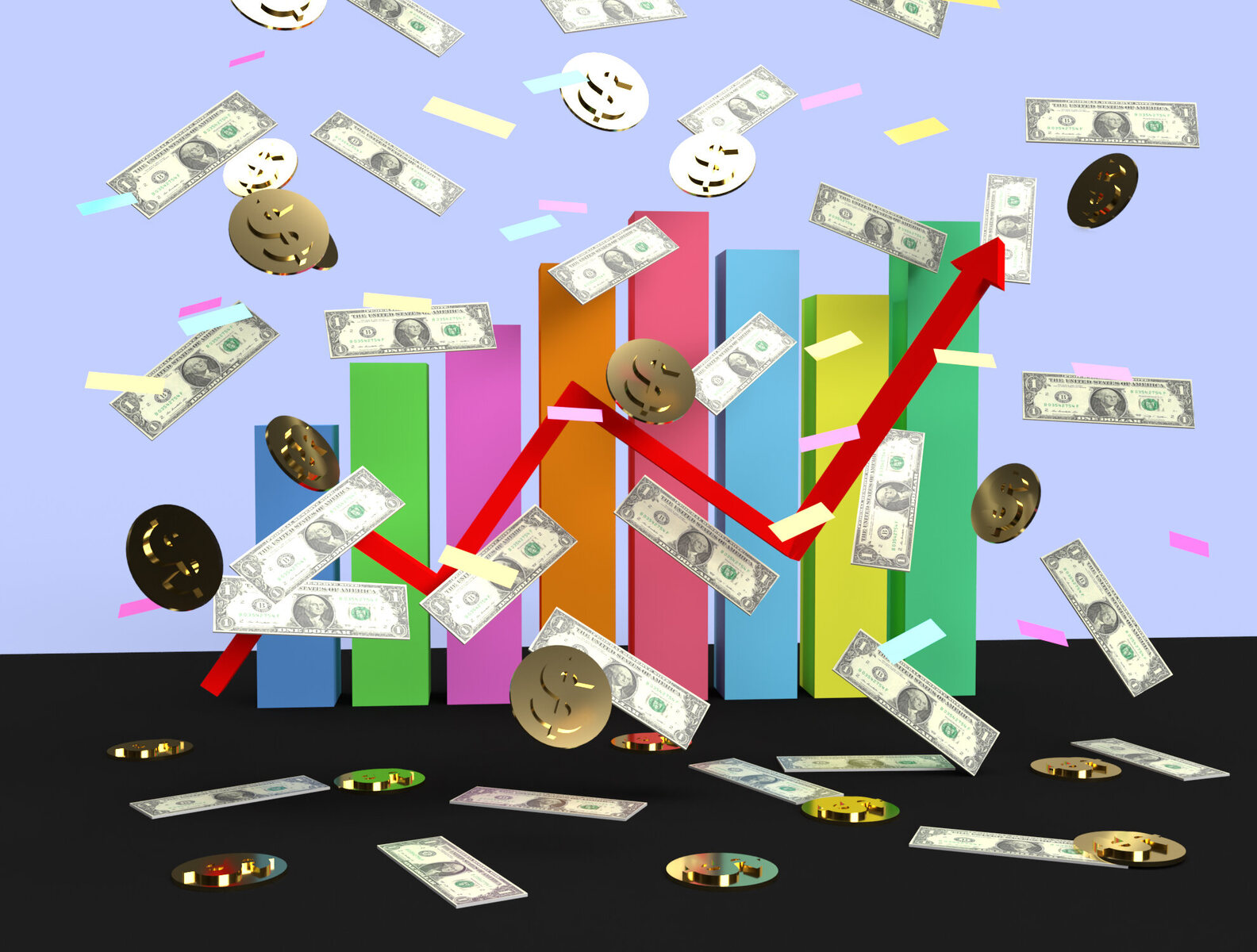Introduction
The rise of blockchain technology has brought about a revolutionary concept in the digital world – non-fungible tokens (NFTs). These unique digital assets have gained significant attention and popularity in recent years, garnering headlines and captivating the imaginations of investors, artists, and collectors alike. With the explosion of the NFT market, it is essential to understand the intricacies of this emerging trend and explore its potential worth.
NFTs are digital tokens that represent ownership or proof of authenticity of a particular digital asset, whether it’s artwork, music, videos, or even virtual real estate. Unlike cryptocurrencies like Bitcoin or Ethereum, which are fungible and can be exchanged on a one-to-one basis, NFTs are indivisible and distinguishable from one another. Each NFT possesses a unique identifier that verifies its authenticity and ensures its scarcity.
The NFT market operates on blockchain technology, allowing for secure transactions and transparent ownership records. Buyers can acquire NFTs from artists or creators through online marketplaces using cryptocurrencies as payment. These tokens are then stored in digital wallets, providing holders with proof of ownership and the ability to trade or sell their NFTs on various platforms.
The NFT market has witnessed exponential growth in recent years, primarily driven by several factors. Firstly, the scarcity and uniqueness of NFTs attract collectors and enthusiasts who value owning exclusive digital assets. Additionally, the ability to support artists directly through NFT sales has revolutionized the art world, providing creators with new revenue streams and eliminating the need for intermediaries.
Moreover, the NFT market appeals to investors looking to diversify their portfolios and capitalize on the potential long-term value of digital assets. With the increasing adoption of blockchain technology and the growing mainstream acceptance of NFTs, the market has expanded beyond art and is now being explored by industries such as gaming, sports, fashion, and real estate.
At present, the NFT market is valued at billions of dollars, and it continues to experience tremendous growth. Artists and creators are reaping the benefits of selling their digital works directly to a global audience, while investors are eager to capitalize on the potential value appreciation of these unique assets.
In this article, we will delve into the current state of the NFT market, exploring the main players, the impact on the art world, the emergence of NFT marketplaces, and the challenges inherent in this nascent industry. We will also touch upon the future outlook for NFTs and how this digital trend is likely to shape various sectors in the coming years.
What are NFTs?
Non-fungible tokens (NFTs) have taken the digital world by storm, but what exactly are they? Simply put, NFTs are unique digital assets that authenticate ownership and establish the originality of a specific item or piece of content. Unlike cryptocurrencies, such as Bitcoin or Ethereum, which are interchangeable and hold the same value, NFTs are distinct and cannot be exchanged on a one-to-one basis.
The uniqueness of NFTs comes from their underlying blockchain technology. Each NFT is associated with a specific piece of data that verifies its authenticity, ownership, and provenance. This data is stored on a decentralized ledger, making it virtually impossible to counterfeit or tamper with. It’s important to note that while the data is encrypted and secure, the NFT itself does not contain the digital asset it represents. Instead, it serves as a digital certificate of ownership or authority to access and enjoy the associated content.
NFTs have gained popularity due to their ability to represent a variety of digital assets, including art, music, videos, virtual real estate, and even virtual collectibles in the form of trading cards or in-game items. These assets can be entirely digital creations or representations of physical items that have been digitized into the blockchain ecosystem.
One of the key features of NFTs is their ability to establish and maintain verifiable scarcity. The blockchain ensures that each NFT has a unique identifier, meaning that no two tokens are the same. This scarcity is what makes NFTs valuable and desirable among collectors and investors, as they can own something that is truly one-of-a-kind.
When it comes to ownership and transactions, NFTs operate on blockchain-based marketplaces or platforms. These platforms provide a space for creators to mint and sell their NFTs, while buyers can acquire them using cryptocurrency as a form of payment. The ownership of NFTs is recorded and publicly accessible on the blockchain, providing transparency and traceability.
It’s worth mentioning that NFTs have sparked significant debate and discussion regarding environmental concerns. Due to the energy-intensive nature of blockchain technology, particularly in the case of proof-of-work consensus mechanisms, the carbon footprint associated with NFTs has raised concerns about their sustainability.
In summary, NFTs are unique digital assets that authenticate ownership and establish the originality of a specific item or content through blockchain technology. They offer a new way to buy, sell, and own digital assets, opening up opportunities for artists, creators, and collectors in the digital realm.
How does the NFT market work?
The NFT market operates on the principles of blockchain technology, utilizing decentralized ledgers to facilitate the buying, selling, and ownership of unique digital assets. Here’s how it works:
1. Creation and Minting: Artists, creators, or rights holders can create and mint NFTs by uploading their digital content onto a blockchain-based platform. This content can include artwork, music, videos, virtual real estate, and more. During the minting process, metadata and a unique identifier are assigned to the NFT, establishing its authenticity and ownership details.
2. NFT Marketplaces: Once minted, NFTs can be listed for sale on various NFT marketplaces or platforms. These marketplaces act as online marketplaces where buyers can discover, browse, and purchase NFTs. Some popular NFT marketplaces include OpenSea, Rarible, SuperRare, and NBA Top Shot.
3. Cryptocurrency Transactions: NFT transactions are typically conducted using cryptocurrencies such as Ethereum (ETH). Buyers can use their digital wallets to make purchases, and once the transaction is completed, the ownership of the NFT is transferred to their wallet.
4. Ownership and Authenticity: The blockchain records and confirms ownership of NFTs through a transparent and immutable ledger. The unique identifier attached to each NFT ensures that it cannot be duplicated or tampered with, establishing its authenticity and provenance.
5. Royalties and Resales: One of the advantages of NFTs is the ability for creators to earn royalties on subsequent resales. Smart contracts embedded in the NFTs enable creators to receive a percentage of the selling price each time their NFT is sold in the secondary market, providing ongoing revenue streams and incentivizing creators to continue producing valuable digital content.
6. Storage and Display: NFTs are stored in digital wallets, which act as secure online storage for these unique digital assets. Wallets can be custodial, where a third-party company holds the keys to the wallet, or non-custodial, where the individual has full control of their wallet and private keys. NFTs can also be displayed digitally in virtual galleries, on websites, or within virtual reality platforms.
7. Trading and Secondary Market: NFTs can be traded on secondary markets, allowing owners to sell or trade their NFTs with other collectors and investors. These secondary markets provide liquidity and a space for buyers and sellers to interact, often resulting in price fluctuations based on supply, demand, and perceived value of the NFTs.
It’s important to note that while NFTs have gained significant attention and popularity, the market is still evolving and facing challenges. Scalability issues, high transaction fees, and potential copyright infringements are among the concerns that need to be addressed as the NFT market continues to grow.
In summary, the NFT market operates through the creation and minting of unique digital assets, listing and selling on NFT marketplaces, cryptocurrency transactions, ownership recorded on the blockchain, potential royalty earnings for creators, storage in digital wallets, and trading in the secondary market.
Factors driving the growth of the NFT market
The NFT market has experienced unprecedented growth and shows no signs of slowing down. Several factors contribute to the surge in popularity and value of NFTs:
1. Digital Ownership and Authenticity: NFTs provide a unique opportunity for individuals to own and authenticate digital assets. With NFTs, creators can prove the originality and ownership of their digital content, offering a sense of exclusivity and rarity that traditional digital files lack.
2. Direct Support for Artists: NFTs have revolutionized the way artists monetize their work. By selling their creations directly to buyers, artists can bypass traditional intermediaries, such as galleries or art dealers. This enables artists to earn higher revenues and establish direct connections with their audience, empowering them economically and creatively.
3. Scarcity and Exclusivity: The concept of scarcity drives the value of NFTs. The limited supply and uniqueness of each NFT make them highly sought after by collectors and enthusiasts. Owning an NFT means owning something that cannot be replicated or divided, enhancing its appeal in the digital realm.
4. Potential Investment Opportunities: NFTs offer the potential for significant returns on investment. As the market expands and gains more attention, early adopters who purchase NFTs at lower prices can potentially sell them for higher prices in the future. Investors see the NFT market as an opportunity to diversify their portfolios and tap into the booming digital asset space.
5. Social Media and Celebrity Influence: The rise of NFTs has been closely tied to social media platforms. Celebrities, influencers, and public figures have embraced NFTs, bringing wider awareness and attracting new participants to the market. Their involvement creates a buzz around NFTs and drives demand for digital assets associated with these influencers.
6. Collectible Culture and Gaming: NFTs tap into the inherent desire for collecting and owning unique items. The concept of digital collectibles and virtual goods in gaming has gained traction, with players buying and trading NFTs to enhance their gaming experiences. This fusion of collecting and gaming culture amplifies the interest and value of NFTs.
7. Expansion into Various Industries: While art initially dominated the NFT market, it has now expanded into other industries. Sports teams, musicians, fashion brands, and even real estate developers have started leveraging NFTs to create innovative digital experiences, engage with fans, and unlock new revenue streams. This diversification of industries increases the market’s growth potential and opens up new avenues for NFT adoption.
8. Technological Innovation: Advancements in blockchain technology and the increasing accessibility of NFT marketplaces have fueled the growth of the market. With user-friendly platforms and simplified processes for creating and trading NFTs, more individuals can participate in the market, driving increased activity and demand.
These factors, along with a growing community of artists, collectors, investors, and enthusiasts, contribute to the ongoing growth and momentum of the NFT market.
Current value of the NFT market
The NFT market has experienced explosive growth, and its current value is estimated to be in the billions of dollars. While precise figures are challenging to determine due to the decentralized nature of the market, various indicators highlight the market’s size and potential:
1. High-Value NFT Sales: Several high-profile NFT sales have captured headlines and exemplify the market’s value. Artwork, digital collectibles, and other unique digital assets have sold for millions of dollars, showcasing the willingness of collectors and investors to pay significant amounts for coveted NFTs.
2. Market Volume: NFT marketplaces report staggering transaction volumes. OpenSea, one of the largest NFT marketplaces, recorded billions of dollars in sales volume in the first half of 2021 alone. This activity demonstrates the robustness and liquidity of the market.
3. Growing Number of Participants: The NFT market has attracted a diverse range of participants, including artists, creators, collectors, investors, and mainstream brands. This influx of participants contributes to increased trading volume and market activity, indicating a thriving and lucrative marketplace.
4. Celebrity and Brand Involvement: Celebrity endorsements, collaborations, and brand partnerships have further propelled the value of the NFT market. High-profile figures, such as musicians, sports teams, and fashion brands, have launched their NFT collections, generating significant interest and driving up the market’s overall value.
5. Market Capitalization of NFT Projects: The market capitalization of specific NFT projects adds to the estimate of the NFT market’s overall value. CryptoPunks, for example, a collection of 10,000 unique digital characters, has achieved a considerable market capitalization, with individual punks selling for hundreds of thousands or even millions of dollars each.
6. Secondary Market Activity: The vibrant secondary market for NFTs, where existing owners sell their NFTs to other buyers, showcases the value and demand for these digital assets. The resales and price appreciation of NFTs highlight the market’s financial growth and potential for substantial returns on investment.
All these indicators confirm that the NFT market is currently valued in the billions of dollars. While it is difficult to pinpoint an exact figure, the immense interest, trading volume, and high-value sales within the market illustrate its vast economic potential.
It’s important to note that the NFT market is still relatively new and evolving, with fluctuations in value and market dynamics expected. As with any investment or emerging market, caution should be exercised, and proper research should be conducted before participating in the NFT space.
Main players in the NFT market
The NFT market is made up of a multitude of players, each contributing to the growth and development of the industry. Here are some of the main participants in the NFT ecosystem:
1. Artists and Creators: Artists and creators are at the heart of the NFT market. They produce unique digital assets, including artwork, music, videos, and virtual collectibles. Through NFTs, artists can directly monetize their creations and establish a closer connection with their audience.
2. NFT Marketplaces: NFT marketplaces serve as online platforms for artists to mint and sell their NFTs, and for buyers to discover and purchase these digital assets. Some of the prominent NFT marketplaces include OpenSea, Rarible, SuperRare, and NBA Top Shot.
3. Collectors and Investors: Collectors and investors play a crucial role in driving the demand and value of NFTs. They purchase and acquire NFTs, focusing on acquiring unique and valuable digital assets for personal enjoyment or as part of an investment strategy. Their participation in the market influences trends and prices within the NFT ecosystem.
4. Technology Platforms: Blockchain technology platforms such as Ethereum provide the infrastructure for the creation and transaction of NFTs. They ensure the secure storage and authentication of NFTs, enabling transparent ownership records and facilitating seamless transactions.
5. Traditional Institutions: Traditional art galleries, museums, and auction houses have started recognizing the potential of NFTs. Some institutions have curated and exhibited NFT works, bridging the gap between digital and traditional art spaces. They contribute to the validation and acceptance of NFTs within the mainstream art world.
6. Influencers and Celebrities: Influencers and celebrities, with their large social media followings and influence, have played a significant role in popularizing NFTs. Their involvement, whether through launching their NFT collections or endorsing specific projects, brings attention and new participants to the market.
7. NFT Service Providers: NFT service providers offer various ancillary services that support the NFT market. This includes platforms for fractionalization and trading of NFTs, NFT analytics and data providers, legal and copyright services, and NFT market research and consulting firms. These providers contribute to the overall ecosystem and help drive innovation in the market.
8. Decentralized Finance (DeFi) Platforms: DeFi platforms, built on blockchain technology, enable the use of NFTs as collateral for borrowing and lending. This integration between NFTs and DeFi extends the utility and financial potential of NFTs, providing additional liquidity and utility to NFT holders.
It’s worth noting that the NFT market is dynamic and constantly evolving, with new players and collaborations emerging regularly. The participation of these various stakeholders contributes to the vibrancy and growth of the NFT ecosystem.
Art and the NFT market
The merging of art and the NFT market has been one of the most transformative aspects of this digital trend. NFTs have revolutionized the art world, offering new opportunities for artists, collectors, and art enthusiasts. Here are some key points highlighting the significance of art within the NFT market:
1. Empowering Artists: NFTs have reshaped the way artists can monetize their work. By selling their artwork as NFTs, artists can gain direct access to a global audience, eliminating the need for intermediaries like galleries or auction houses. This direct connection empowers artists financially and allows them to maintain more control over their creative endeavors.
2. Established Artists in the NFT Space: Well-known artists from various disciplines have entered the NFT market, bringing their established reputations and creative expertise. This involvement has brought attention and legitimacy to the NFT market and served as a catalyst for further adoption by both artists and collectors.
3. Digital Art Renaissance: NFTs have sparked a renaissance in digital art. Artists who primarily work in digital mediums now have a new avenue to showcase and sell their creations. NFTs allow these digital works to be authenticated, making them scarce and valuable, much like traditional physical artwork.
4. Unique Artistic Opportunities: NFTs offer artists innovative ways to express their creativity. Through NFTs, artists can experiment with interactive and dynamic elements in their artwork, such as unlocking additional content or providing access to virtual experiences. This adds unique and immersive dimensions to the art form.
5. Royalties and Secondary Sales: NFTs enable artists to earn ongoing royalties on secondary sales. Traditional art market practices often deny artists a share of the profit when their works are resold for higher prices. With NFTs, smart contracts can be programmed to ensure that artists receive a percentage of each subsequent sale, empowering them financially and promoting a more equitable art market.
6. Expanding Artistic Expression: NFTs have opened up new possibilities for artistic expression. Artists can break free from the constraints of the physical world and explore the limitless potential of the digital realm. This includes immersive virtual experiences, generative art, and collaborations with other artists, further pushing the boundaries of what art can be.
7. Increased Access and Inclusivity: The NFT market has made art more accessible and inclusive. Digital art can reach a wider audience, crossing geographical boundaries and allowing individuals who may not have access to traditional art institutions to appreciate and collect artwork. This democratization of art ownership has created opportunities for emerging artists to gain recognition and thrive in the market.
Overall, the integration of art into the NFT market has profoundly transformed the art landscape. NFTs have empowered artists, expanded artistic possibilities, and brought art to a larger and more diverse audience, paving the way for a new era of creativity and artistic expression.
NFT marketplaces and platforms
NFT marketplaces and platforms play a crucial role in facilitating the buying, selling, and trading of non-fungible tokens. These online platforms provide a space for artists, collectors, and investors to participate in the NFT market. Here are some key points to understand about NFT marketplaces and platforms:
1. Marketplace Selection: There are numerous NFT marketplaces available, each with its own unique features, user base, and focus. OpenSea is one of the largest and most popular NFT marketplaces, offering a wide range of digital assets, including artwork, collectibles, and virtual land. Other prominent marketplaces include Rarible, SuperRare, NBA Top Shot, and Nifty Gateway.
2. Artist Minting and Listing: NFT marketplaces allow artists and creators to mint and list their NFTs for sale. Minting involves tokenizing a digital asset and creating a unique digital representation of it on the blockchain. Once minted, artists can set pricing, royalties, and other parameters for their NFTs before making them available for purchase on the marketplace.
3. Discoverability and Curation: NFT marketplaces provide features for users to explore and discover NFTs. These platforms often have search filters, categories, and curated collections to help users navigate through the extensive offerings. Some marketplaces have dedicated curators who select and showcase specific NFT collections, enhancing discoverability for artists and enabling collectors to find interesting and valuable NFTs.
4. Auctions and Bidding: Many NFT marketplaces facilitate auctions and bidding for NFTs. Through auctions, buyers can place bids on NFTs, and the highest bid at the end of the auction period wins the NFT. This mechanism adds an element of excitement and competitiveness to the NFT market, allowing for potentially higher sale prices for coveted digital assets.
5. Secondary Market Trading: Secondary markets on NFT platforms enable the buying and selling of NFTs that have already been minted and owned by others. These markets allow users to trade NFTs they own or purchase existing NFTs from other collectors. The secondary market provides liquidity to NFT holders and allows for speculation and price discovery.
6. Wallet Integration: NFT marketplaces typically integrate with digital cryptocurrency wallets. Users can connect their wallets to these platforms and easily manage their NFTs. Wallet integration ensures secure storage and ownership verification of NFTs, providing a seamless experience for both buyers and sellers.
7. Platform Fees: NFT platforms charge fees for transactions that occur on their marketplaces. These fees are usually a percentage of the sale price or a fixed amount. The fee structure can vary from platform to platform, and it’s essential for users to understand the fee structure before transacting on a specific marketplace.
8. Platform-Specific Features: NFT platforms often differentiate themselves by offering unique features. For example, some platforms focus on specific verticals like art or gaming, while others emphasize community engagement and social interactions. Certain platforms may offer additional services such as tokenization of real-world assets or support for decentralized autonomous organizations (DAOs).
NFT marketplaces and platforms provide the infrastructure that enables artists, collectors, and investors to participate in the NFT market. These platforms serve as essential hubs for discovering, minting, buying, and selling NFTs, fostering the growth of the digital asset ecosystem.
Other industries leveraging NFTs
While art has been at the forefront of the NFT market, other industries are also recognizing the potential of non-fungible tokens. NFTs have expanded beyond the realm of digital art and are being utilized in various sectors to unlock new possibilities and revenue streams. Here are some industries leveraging NFTs:
1. Gaming and Virtual Realms: NFTs have found significant traction in the gaming industry, allowing players to own and trade in-game assets. Gamers can purchase NFTs representing unique virtual items, characters, or land within games. This ownership provides a sense of exclusivity and allows players to showcase their virtual collections. Blockchain-based gaming platforms are emerging, facilitating the trading of NFTs between players and opening doors for unique gaming experiences.
2. Sports and Collectibles: NFTs have disrupted the sports memorabilia market by offering digital collectibles and experiences. NBA Top Shot, for example, enables basketball fans to own limited-edition digital moments of their favorite players in the form of NFTs. These collectible highlights can be bought, sold, and traded among fans, creating a new digital ecosystem for sports enthusiasts.
3. Fashion and Luxury Goods: The fashion industry is exploring NFTs as a means to digitally certify the authenticity and ownership of luxury goods. Brands can use NFTs to create limited-edition digital fashion items, virtual accessories, or designs that can only be owned by the purchaser of the NFT. This digital ownership adds value and exclusivity to the fashion and luxury market.
4. Virtual Real Estate: NFTs are being used to represent virtual land and properties within virtual reality (VR) and metaverse platforms. Users can buy and own virtual real estate, which they can develop, sell, or lease to other users within the virtual world. This creates a virtual economy and ecosystem where individuals can invest in and monetize their virtual holdings.
5. Music and Intellectual Property: NFTs are disrupting the music industry by allowing artists to sell and tokenize their music in a unique way. Musicians can release limited-edition albums, songs, or concert tickets as NFTs, providing fans with exclusive digital collectibles and special access. NFTs can also be used to establish ownership rights and royalties for musicians, simplifying the management and distribution of music royalties.
6. Charitable Donations and Social Causes: NFTs have been used for charitable purposes, allowing organizations to raise funds for social causes. Artists and creators can auction off NFTs with a portion of the proceeds donated to specific charities. NFTs provide transparency in tracking donations and enable supporters to own a unique piece of digital art or collectible while contributing to a cause they care about.
7. Event Tickets and Experiences: NFTs are transforming the ticketing industry by offering secure and verifiable digital ticketing solutions. NFT-based event tickets ensure authenticity, prevent fraud, and allow for the transfer of ownership. Additionally, NFTs can provide access to exclusive experiences or VIP perks associated with events.
These are just a few examples of industries harnessing the potential of NFTs. As the technology matures, more sectors are likely to adopt and explore the benefits of non-fungible tokens, unlocking new avenues for innovation, engagement, and monetization.
Challenges and risks in the NFT market
While the NFT market presents exciting opportunities and growth potential, it is not without its challenges and risks. Here are some of the key considerations:
1. Environmental Impact: The energy consumption of blockchain networks used for NFT transactions has raised concerns about the environmental impact. Proof-of-work consensus mechanisms, such as those used by Ethereum, require substantial computing power and energy, contributing to carbon emissions. Efforts are underway to explore more sustainable alternatives, such as proof-of-stake, to mitigate the environmental footprint of NFTs.
2. Market Saturation and Quality Control: The growing number of NFTs available in the market poses challenges in terms of quality control and finding valuable assets. With the ease of minting and listing NFTs, the market can become saturated, making it harder for individual NFTs to gain attention and recognition. Ensuring curation, authenticity, and the presence of reputable artists and creators becomes essential to maintain the market’s integrity.
3. Copyright and Intellectual Property Issues: NFTs have raised copyright and intellectual property concerns. There have been instances where NFTs infringe upon the rights of creators or feature content without proper authorization. Clarifying ownership rights and ensuring proper attribution are important considerations to protect artists and creators in the NFT space.
4. Price Volatility and Speculation: Like any market, the NFT space is prone to price volatility and speculation. The value of NFTs can fluctuate dramatically, driven by trends, hype, and market sentiment. Speculation in the market can lead to inflated prices and increased risk for investors, potentially resulting in a bubble and subsequent market correction.
5. Technological Limitations and Scalability: Blockchain technology still faces scalability challenges, particularly in handling a large number of transactions. High transaction fees and network congestion on popular blockchain platforms can hinder the accessibility and usability of NFTs. Scalability solutions, such as layer-2 protocols or the use of alternative blockchains, are being explored to address these limitations.
6. Regulatory and Legal Uncertainty: The regulatory landscape for NFTs is still evolving. Legal frameworks surrounding securities regulations, anti-money laundering (AML) requirements, and tax implications need to be clarified to ensure compliance and protect market participants. Investors and creators should be aware of the potential legal implications associated with NFT transactions in their respective jurisdictions.
7. Security and Vulnerabilities: The security of NFTs and the underlying blockchain infrastructure is critical. Instances of hacking, fraudulent activities, and scams have occurred within the NFT market. Users need to be cautious about phishing attempts, secure their digital wallets, and ensure they use reputable platforms to transact and store their NFTs.
As the NFT market continues to evolve, addressing these challenges and mitigating risks will be essential to ensure the long-term sustainability and legitimacy of the space. Industry collaboration, technological advancements, and regulatory clarity are key factors that can help overcome these obstacles and foster a thriving and secure NFT ecosystem.
Future outlook for the NFT market
The future of the NFT market holds immense potential, with several developments and trends shaping its trajectory. Here’s a glimpse into the future outlook for the NFT market:
1. Continued Expansion and Diversification: The NFT market is expected to continue expanding, branching out beyond art and into various industries. Music, gaming, sports, fashion, and virtual real estate are just the beginning. As more sectors recognize the value of NFTs, we can expect to see innovative use cases and collaborations across a wide range of fields.
2. Integration of Virtual and Physical Worlds: The boundary between the virtual and physical worlds is likely to blur further as NFTs bridge the gap between the two. NFTs could enable seamless integration, allowing owners to showcase their virtual assets in augmented reality (AR) or virtual reality (VR) environments, creating completely immersive experiences for digital collectibles and digital art.
3. Enhanced Interoperability: Interoperability between different blockchain networks and NFT platforms will be crucial for the growth of the market. This would allow NFTs to be traded and used across multiple platforms seamlessly, expanding liquidity and enabling greater connectivity within the NFT ecosystem.
4. Sustainable Solutions: Recognizing the environmental concerns associated with the NFT market, efforts towards more sustainable solutions are expected to gather momentum. The integration of energy-efficient blockchain protocols, carbon offset initiatives, and the exploration of greener alternatives like proof-of-stake consensus mechanisms will likely play a role in reducing the carbon footprint of NFTs.
5. Improved User Experience and Accessibility: User experience and accessibility will be key drivers for broader adoption of NFTs. User interfaces and platform functionalities will evolve, becoming more user-friendly, intuitive, and efficient. Additionally, the reduction of transaction fees and scalability solutions will make NFTs more accessible to a wider audience.
6. Augmented Social Experiences: NFTs have the potential to transform social interactions and community engagement. Virtual events, virtual galleries, and digital communities enabled by NFTs can foster new forms of creative collaboration, education, and social exchange. This augmented social experience within the NFT ecosystem could lead to the emergence of thriving digital art communities and vibrant virtual marketplaces.
7. Institutional Involvement: Traditional institutions, including art galleries, auction houses, and financial institutions, are likely to further embrace NFTs. These institutions may facilitate the integration of NFTs into their existing platforms, bringing about increased acceptance, credibility, and institutional investment in the NFT market. This involvement could further solidify NFTs as a legitimate asset class.
While the future of the NFT market holds great promise, it is essential to address challenges such as environmental impact, regulatory clarity, and market integrity. Collaboration among stakeholders, ongoing technological advancements, and the establishment of industry standards will be crucial to foster sustainable growth and ensure a vibrant and inclusive future for the NFT market.
Conclusion
The NFT market has emerged as a groundbreaking and transformative trend fueled by blockchain technology. The ability to authenticate ownership and establish the uniqueness of digital assets has captured the attention of artists, collectors, investors, and industries across the globe.
NFTs have revolutionized the art world, providing artists with new revenue streams and empowering them to connect directly with their audience. The market has expanded beyond art, infiltrating gaming, fashion, sports, and other sectors, creating a new digital economy with limitless possibilities.
While the NFT market presents exciting opportunities, it is not without its challenges. Environmental concerns, regulatory uncertainties, and copyright issues need to be addressed to ensure the market’s long-term sustainability and integrity.
The future outlook for the NFT market is incredibly promising. With continued expansion and diversification, integration of virtual and physical worlds, improved user experience, and sustainable practices, the market is on an upward trajectory. Interoperability, augmented social experiences, and institutional involvement are expected to further propel the market forward.
As the NFT market evolves and matures, it is crucial for all stakeholders to collaborate, innovate, and address the challenges that arise. By doing so, we can cultivate a vibrant and inclusive NFT ecosystem that benefits artists, creators, collectors, investors, and society as a whole.
In summary, the NFT market is revolutionizing the way we perceive and engage with digital assets. Its impact on art, culture, and various industries is profound, and its future holds tremendous potential for growth, innovation, and creative expression.









